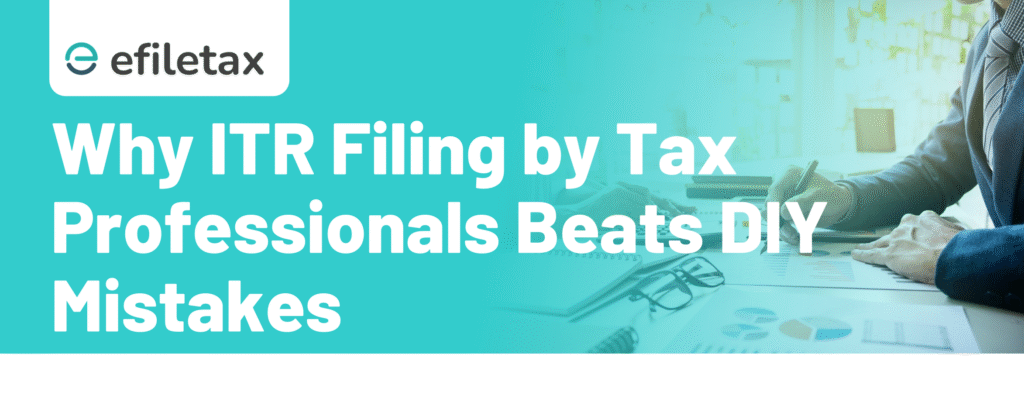
Can You Change Tax Regime While Filing ITR?
Yes, tax regime change while filing ITR is possible—but not for everyone. The rules depend on your income source and whether you’ve already exercised your option under Section 115BAC(6). With the default regime shifting to new tax regime from FY 2023–24 (AY 2024–25), many taxpayers are unsure if they can switch. This blog clears the air using CBDT rules, FAQs, and the latest ITR forms.
Old vs New Tax Regime: What’s the Difference?
| Particulars | Old Regime | New Regime (115BAC) |
|---|---|---|
| Slab rates | Higher | Lower |
| Deductions allowed | Yes (80C, 80D, HRA etc.) | Mostly disallowed |
| Standard deduction | Yes | Yes (from AY 2024–25 onwards) |
| Default status | Opt-in | Default from AY 2024–25 |
| Switching option | Allowed (with rules) | Allowed (with rules) |
Who Can Switch Tax Regime While Filing ITR?
1. Salaried Individuals (No Business Income)
- Can switch between old and new regime every year.
- No separate Form 10-IEA filing required.
- Option selected in ITR is final for that year.
CBDT Source: FAQ #3, Notification No. 43/2023 dated 21.06.2023
Example:
You filed last year under old regime. In FY 2023–24, you want to try the new regime. Just choose it in your ITR while filing—done.
2. Business or Profession Income (Self-Employed)
- Can switch only once back to old regime after opting for new.
- Must file Form 10-IEA before the due date under Section 139(1).
- Once back to old regime, cannot switch to new again in future years.
Legal Base: Section 115BAC(6) read with Rule 21AGA of Income-tax Rules
Example:
A freelance graphic designer opted for new regime in AY 2024–25 and now regrets it. She can return to old regime in AY 2025–26, but it will be her last switch.
Where to Choose Tax Regime in ITR?
In ITR-1, ITR-2, ITR-3, and ITR-4 for AY 2025–26, a specific question asks:
“Have you opted for taxation under Section 115BAC(1A)?”
- Tick ‘Yes’ for new regime
- Tick ‘No’ for old regime
Important: ITR-3 and ITR-4 filers with business income must file Form 10-IEA separately before the ITR deadline.
What Is Form 10-IEA?
Form 10-IEA replaces the old Form 10-IE from AY 2024–25 onwards.
| Purpose | Details |
|---|---|
| Who needs it? | Only taxpayers with business/profession income |
| Filing deadline | Before ITR due date (Sec 139(1)) |
| How to file | Through Income Tax e-filing portal |
| Which Section? | 115BAC(6) |
Expert Tip: Don’t Decide Blindly
While new regime offers lower slab rates, it disallows major deductions like:
- 80C (PF, ELSS, LIC)
- 80D (Health insurance)
- HRA, LTA, Interest on housing loan (Sec 24b)
Pro Tip:
Compare total tax under both regimes using Efiletax calculator or consult a tax expert. For many with housing loans or large 80C claims, the old regime still results in lower tax.
Key Legal References
- Section 115BAC of Income-tax Act, 1961
- Rule 21AGA of Income-tax Rules
- CBDT Notification No. 43/2023
- ITR Form Changes via CBDT Notification No. 40/2025
Summary
Taxpayers can change their tax regime while filing ITR, but only salaried individuals can do this every year. Business owners can switch only once. Know the ITR rules, Form 10-IEA deadlines, and the impact on deductions to make the right tax-saving choice.
FAQs
Q1. Can I change tax regime after filing ITR?
No. Once filed, the chosen regime is locked unless you revise your return before the deadline.
Q2. Can I file ITR under old regime even if Form 16 shows new regime?
Yes. Form 16 reflects TDS; you can still choose the old regime while filing.
Q3. What if I miss filing Form 10-IEA?
Then your ITR under old regime will be considered invalid. You’ll be taxed under the new regime by default.
Final Thoughts
Choosing between old and new tax regime isn’t just a formality—it directly affects your refund or payable amount. If you’re unsure, let our experts at Efiletax help. We ensure correct Form 10-IEA filing, regime comparison, and accurate ITR submission for peace of mind.